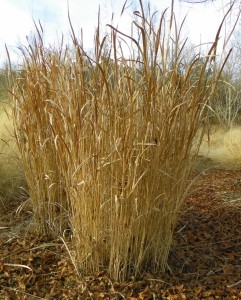What Should I Do (and Not Do) in My Yard This Fall?
go.ncsu.edu/readext?1098689
en Español / em Português
El inglés es el idioma de control de esta página. En la medida en que haya algún conflicto entre la traducción al inglés y la traducción, el inglés prevalece.
Al hacer clic en el enlace de traducción se activa un servicio de traducción gratuito para convertir la página al español. Al igual que con cualquier traducción por Internet, la conversión no es sensible al contexto y puede que no traduzca el texto en su significado original. NC State Extension no garantiza la exactitud del texto traducido. Por favor, tenga en cuenta que algunas aplicaciones y/o servicios pueden no funcionar como se espera cuando se traducen.
Português
Inglês é o idioma de controle desta página. Na medida que haja algum conflito entre o texto original em Inglês e a tradução, o Inglês prevalece.
Ao clicar no link de tradução, um serviço gratuito de tradução será ativado para converter a página para o Português. Como em qualquer tradução pela internet, a conversão não é sensivel ao contexto e pode não ocorrer a tradução para o significado orginal. O serviço de Extensão da Carolina do Norte (NC State Extension) não garante a exatidão do texto traduzido. Por favor, observe que algumas funções ou serviços podem não funcionar como esperado após a tradução.
English
English is the controlling language of this page. To the extent there is any conflict between the English text and the translation, English controls.
Clicking on the translation link activates a free translation service to convert the page to Spanish. As with any Internet translation, the conversion is not context-sensitive and may not translate the text to its original meaning. NC State Extension does not guarantee the accuracy of the translated text. Please note that some applications and/or services may not function as expected when translated.
Collapse ▲Pruning, leaves, pollinator gardens, and lawn care tips for the Piedmont.
As the days get shorter and the leaves start to fall, it’s easy to think everything in the yard needs to be cleaned up before winter. But in most cases, your landscape will be better off if you do a little less right now. Fall is the time to tidy lightly, not overhaul.
Wait to Prune
Hold off on major pruning until late winter or early spring. Making pruning cuts causes new growth, and that new growth will be damaged when cold weather settles in. Most pruning is best done when plants are fully dormant. If you must prune now, limit it to removing dead, damaged, or unsafe limbs. Leave shaping and thinning for later in the winter.
Put Those Leaves to Work
Before you reach for the rake and lawn bags, consider what those leaves can do for you. A layer of leaves around trees, shrubs, or garden beds helps hold moisture, adds organic matter to the soil, and cuts down on weeds. Many butterflies, bees, and other insects use leaf litter to survive the winter, so leaving a few piles or a light layer in garden beds gives them shelter.
On your lawn, mow over the leaves a few times to shred them. They’ll break down faster and feed the soil without blocking sunlight. A few minutes with the mower is a lot easier than bagging piles and it keeps nutrients where they belong.
Pollinator Garden Chores
If you have a pollinator garden, now’s the time to do less cleanup, not more. Leave some stems standing as many native bees nest in hollow or pithy stems. Wait until late winter or early spring to remove old growth, and save a few seeds for next year while leaving plenty for the birds. A thin layer of leaves or pine needles will protect roots without blocking new shoots in spring. A pollinator garden may not look perfect this time of year, but that “messy” look is what keeps it full of life!

Wait until late winter to cut back perennials and ornamental grasses so their seeds can provide food for birds.
Lawn Care for Fall
For tall fescue lawns, fall is a good time for feeding and repair. If you didn’t soil test, a general fertilizer recommendation is to apply a complete fertilizer with a 3-1-2 or 4-1-2 ratio (like 12-4-8 or 16-4-8). Use about 1 pound of nitrogen per 1,000 square feet in mid-September and again in November, when grass is green but not actively growing. Control broadleaf weeds now, but always follow label directions when using herbicides.
Do This Now, Save That for Later
Good jobs for now: remove dead or dangerous branches, control weeds and invasives before they spread, shred leaves that are found in your lawn or pile the leaves in/around your planting beds, and clean up walkways and bedding edges.
Save for late winter: major pruning or shaping, cutting back perennials, and refreshing mulch.
In Short
Don’t feel like you have to “finish” your yard before winter. A little cleanup and some patience go a long way. Let the leaves work for you, give wildlife a place to stay, and save the big pruning for later.
NC State Extension has helpful guides for every season to keep your landscape healthy and manageable. For more in-depth information pertaining to any of these topics, please visit some of the sites listed below.




